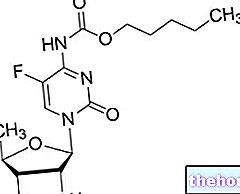Generality
The term "narcotics" generally refers to a set of drugs which - alongside the analgesic effect - are also capable of inducing narcosis in the patient.

In the past, the term "narcotics" was used to indicate all the active ingredients belonging to the class of opioid analgesics; however, currently this term is considered rather obsolete and somewhat ambiguous, since, more often than not, the word "narcotics" is also misused to indicate other drugs or substances that act on the central nervous system without inducing narcosis, such as, for example , sympathomimetics, hallucinogens and psychotomimetics.
However, in these cases, opioid drugs that induce narcosis are preferentially referred to as "narcotic analgesics".
Finally, sometimes, the deep sleep induced by narcotics is identified - in the surgical field - with "general anesthesia. For this reason, it may happen that the term" narcotics "is also used to indicate general anesthetic drugs.
Narcotic analgesics
As stated, narcotic analgesics are identifiable with opioid drugs used in the treatment of pain and capable of inducing narcosis.
The active ingredients belonging to this class of drugs can be divided according to their origin; therefore, we can distinguish:
- Narcotic (or opioid) analgesics of natural origin, such as morphine and codeine;
- Semi-synthetic narcotic (or opioid) analgesics, such as buprenorphine and heroin (the latter, however, is not a drug, but a drug of abuse);
- Synthetic narcotic (or opioid) analgesics, such as methadone, meperidine (also known as pethidine), tramadol and fentanyl (or fentanyl, if you prefer).
Therapeutic indications
As mentioned, all narcotic analgesics (with the exception of illegal ones, as drugs of abuse, such as heroin) are used in the treatment of moderate to severe pain.
More specifically, the use of this type of drug is particularly useful in case of neoplastic pain, chronic pain associated with different types of pathologies and perioperative pain. Not surprisingly, narcotic analgesics belong to the large group of drugs used in the therapy of ache.
Codeine, on the other hand, in addition to being exploited for its analgesic activity, is also used in therapy - at the appropriate dosages - as a cough drug, since it is also endowed with interesting antitussive properties.
Mechanism of action
Narcotic analgesics - therefore opioid drugs, or opioid analgesics, if you prefer - perform their action by interacting with the opioid receptors present in our body (endogenous opioid receptors).
There are four different types of opioid receptors: the μ receptors (otherwise known as MOPs); the δ receptors (also known as DOP); κ receptors (otherwise known as LAD) and orphan receptors (also known as NOP).
These receptors are localized and distributed along the pain pathways of our body and their activation is able to induce a marked analgesic effect.
Therefore, narcotic analgesics exert their pain-relieving action through the stimulation and activation of the aforementioned opioid receptors.
Side effects
Narcotic pain relievers are very powerful pain relievers, but they have side effects that should not be underestimated. That is why their prescription is strictly regulated by law.
The type of side effects and the intensity with which they occur can vary greatly from individual to individual, also depending on the drug dose administered. In fact, many undesirable effects caused by narcotic analgesics are dose-dependent (such as, for example, the respiratory depression).
In any case, among the main adverse effects that can occur following the intake of narcotic analgesics, we remember:
- Somnolence and sedation;
- Narcosis (in fact, narcosis is considered a secondary effect, since these active ingredients are used for their analgesic action and not to induce a state of deep sleep);
- Nausea and vomit;
- Miosis;
- Euphoria and excitement;
- Confusional states;
- Respiratory depression.
Finally, narcotic analgesics can cause addiction, tolerance and dependence, both physical and psychic.
Addiction to narcotic analgesics constitutes a real drug addiction, which must be adequately treated, since its implications can also be tragic.
In any case, it should be remembered that - if used at the correct therapeutic doses and under the strict supervision of the doctor - narcotic analgesics are unlikely to give rise to addiction phenomena.




























